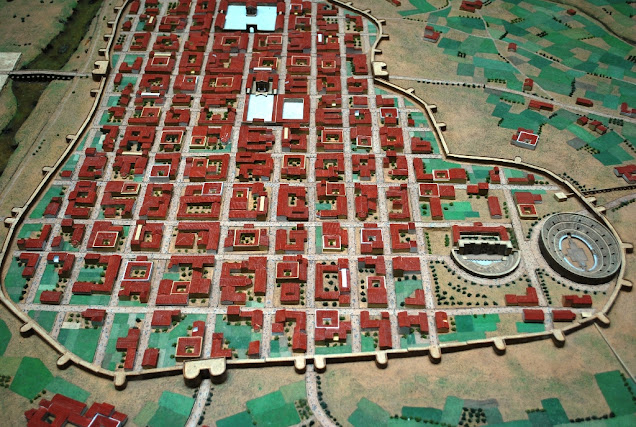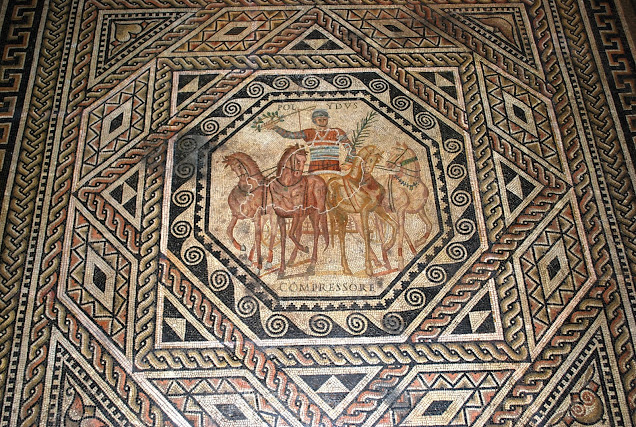Theater of Colonia Augusta Merita (1)
August 1, I visited this breathtaking theater in Merida. Colonia Merita Augusta was founded in 25 BC and capital of Lusitania, one of the most important towns in Spain.
A beautiful small booklet with the above picture goes with the entrance ticket. The excavations started in 1910 and marks "a milestone" in the history of archeological activity at Merida. The booklet states: "Such buildings, built for political motives, did not reflect the tastes of the public, which tended to prefer circus and amphitheater entertainments. From the theater, the ruling authority achieved effective propaganda, for itself and for the Roman way of life, both through the actual building - its physical grandeur, epigraphs and iconography - and through the messages that could be transmitted from the stage. In Augusta Merita, it was the consul Marcus Agrippa who promoted the building of the theater, which was inaugurated between 16 and 15 BC., on the evidence of the inscriptions over the two doorways to the orchestra."
Due to a fire, serious restoration was conducted, as was mentioned in an inscription of 135 AD. It stated:
"The Emperor Caesar Traianus Hadrianus Augustus, son of the deified Traianus Parhicus, grandson of the deified Nerva, high priest, holder of the tribunician power for the 19th time, emperor for the 2nd time, consul for the 3rd time, father of the fatherland, best prince, has restored the block and the proscaenium of the theater, which had been devastated by a fire, and celebrated (their inauguration) with stages and circus games."
During my visit the orchestra was covered by blue plastic, protecting the technical equipment for a performance of the Odyssey by Homer. As you can see the theater has a capacity of about 5,000 to 6,250 spectators. The cavea consists of 23 rows, while the rows in the ima cavea are split by 6 cunei.
Mainly due to Christianity, which considered theatrical performances immoral, becoming established as the official religion, the building fell into disuse, in the end being totally abondoned. As time went by, some of its structures collapsed and filled up with earth. The picture above, dates from the start of the exavations, and as you can see the lowest parts of the theater were covered by a thick earthlar.
The facade was erected in 105 AD, undergoing alterations between 333 and 335, and the most spectaculair part of the building. There are two tiers of Corinthian-order columns, in which the blue-tinged marble of the column shafts is combined with the white of bases and capitals. Over each tier of columns these is an entablature with richly decorated architrave, frieze and cornice. A huge marble-clad wall closes off the back of the stage.
In between the columns a series of sculptures, now in the National Museum of Roman Art: you can see my pictures of some of the statues at Flickr (see the link below).
The aditus maximus, or central entrance is still well preserved.









Reacties
Een reactie posten